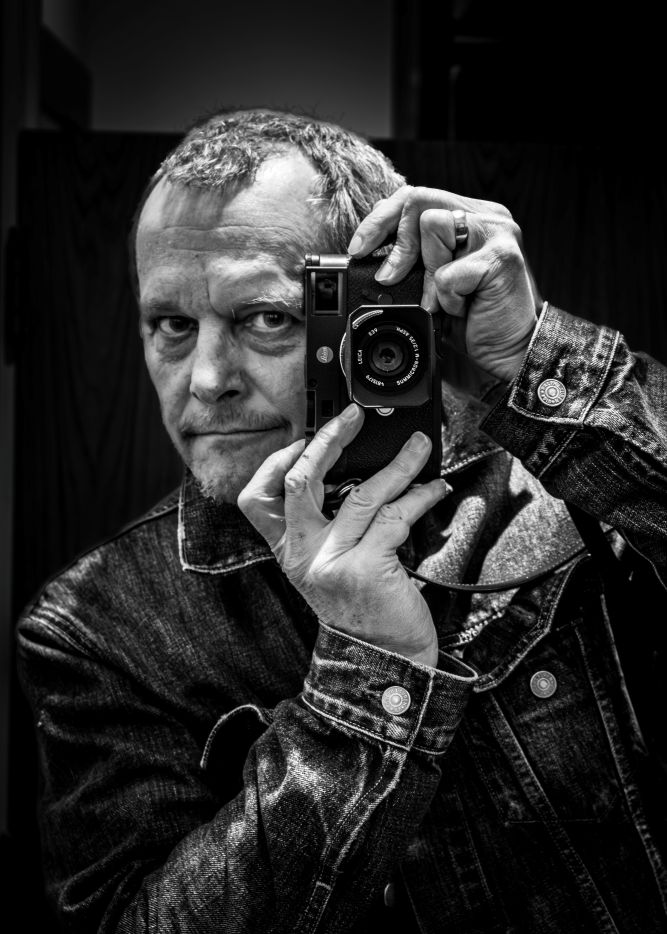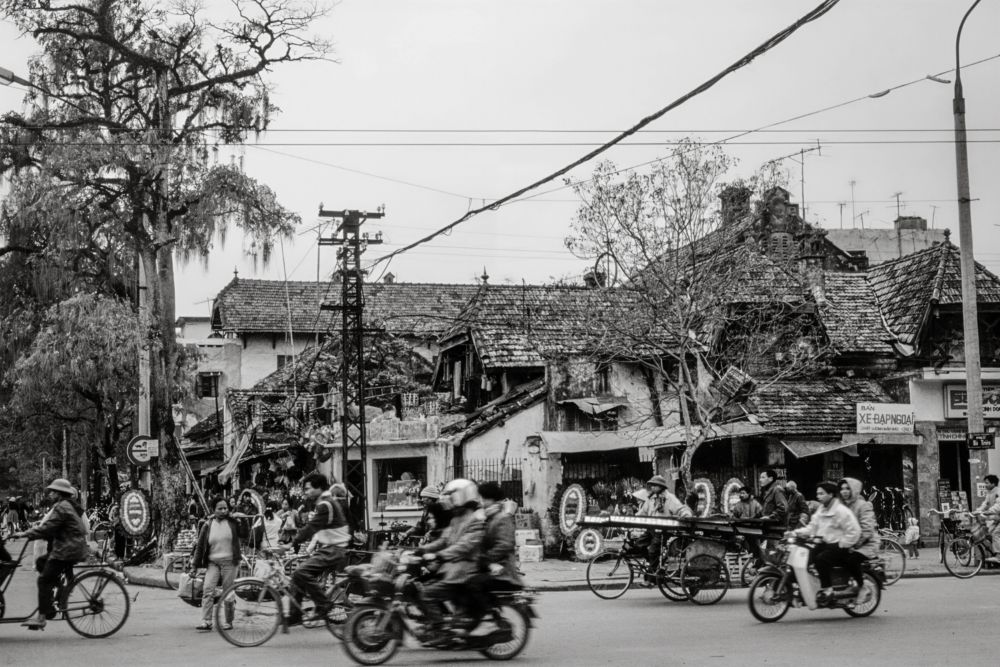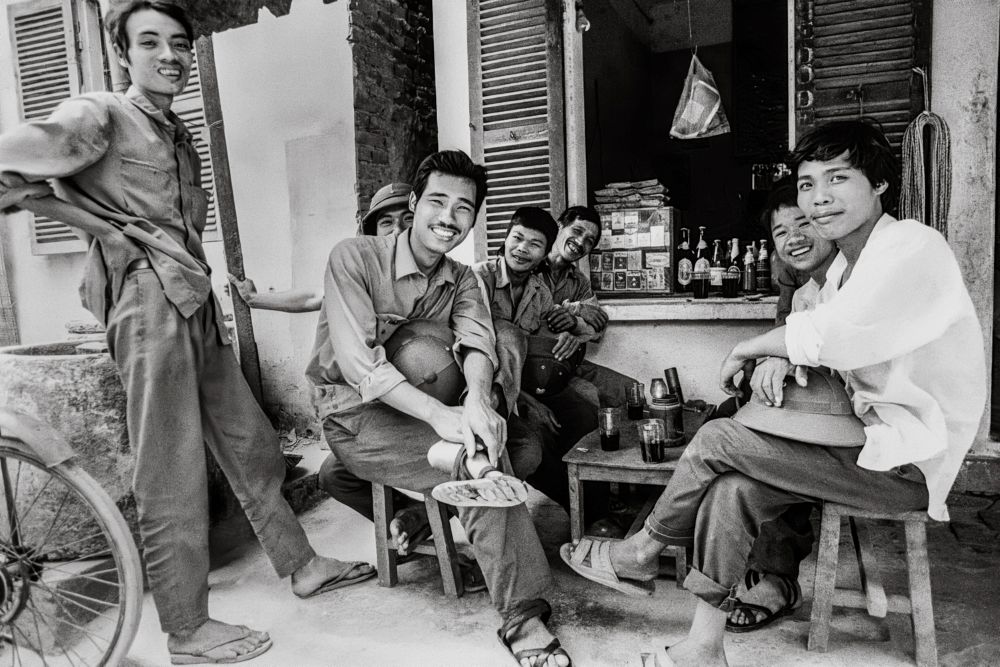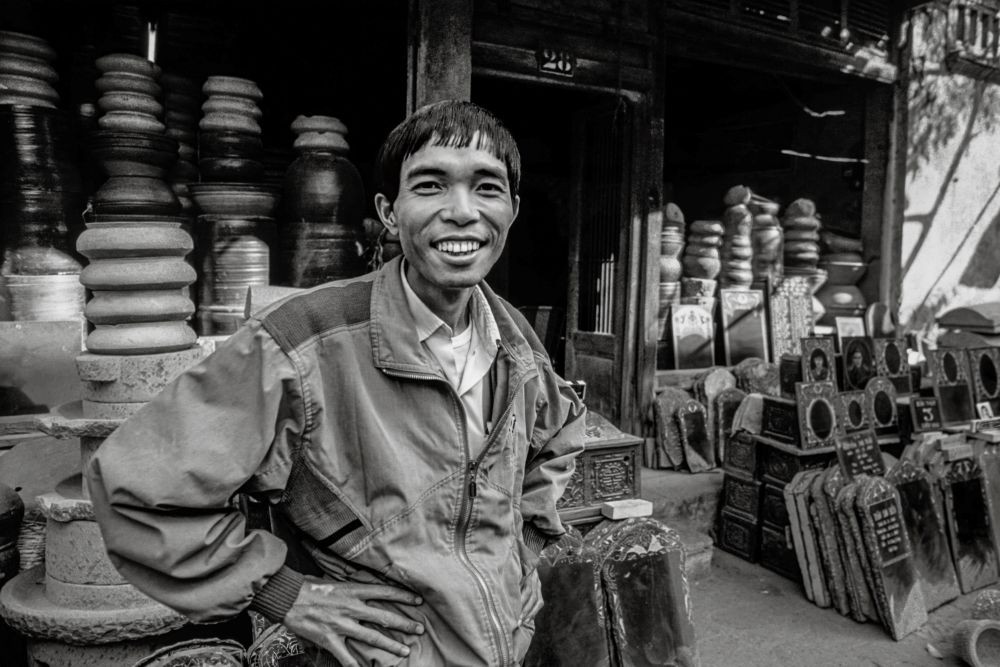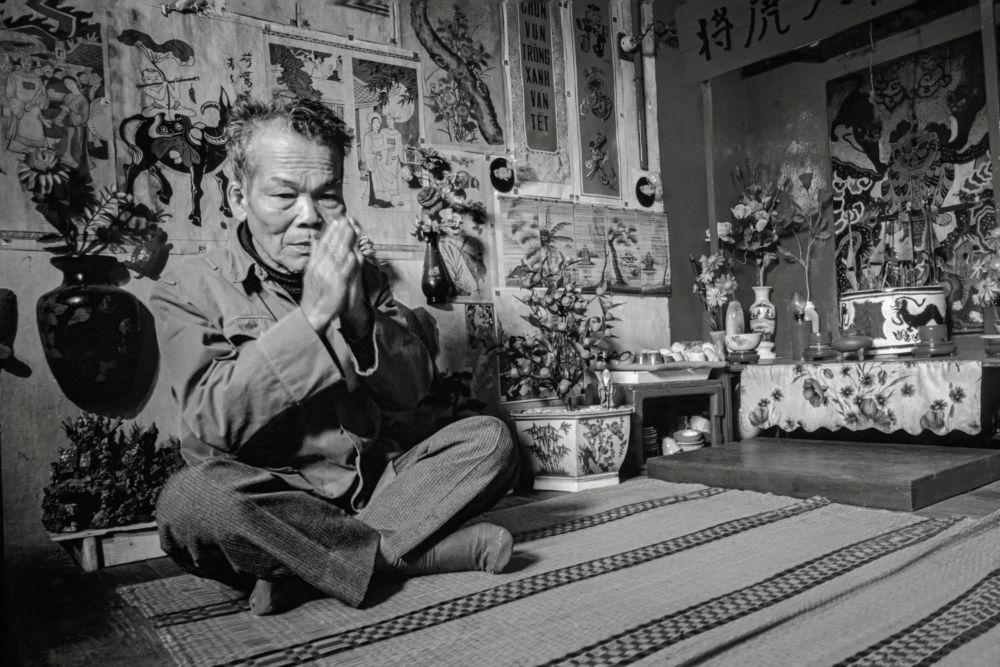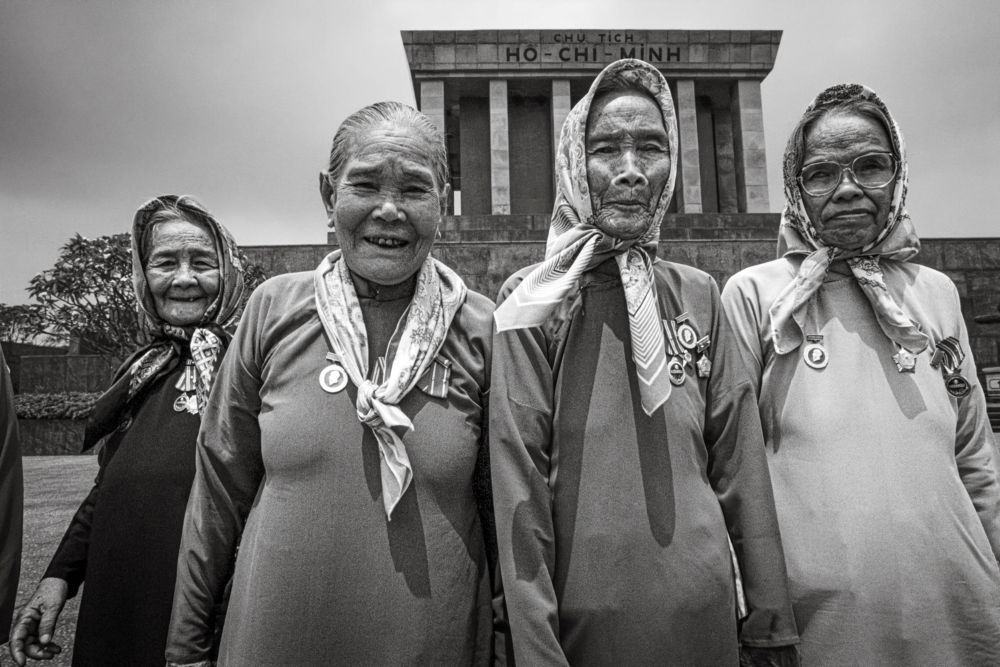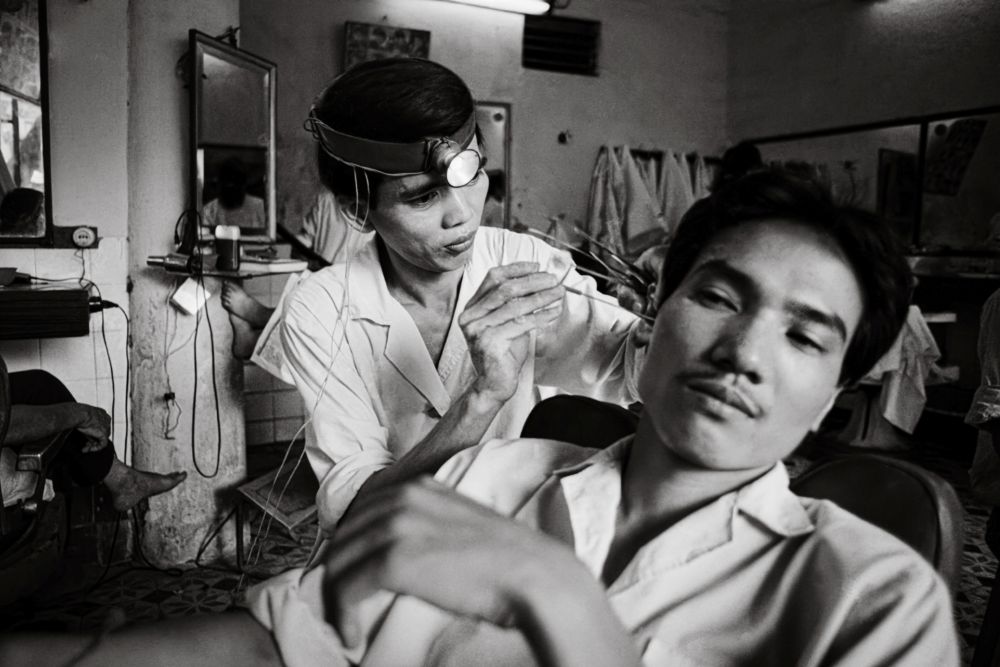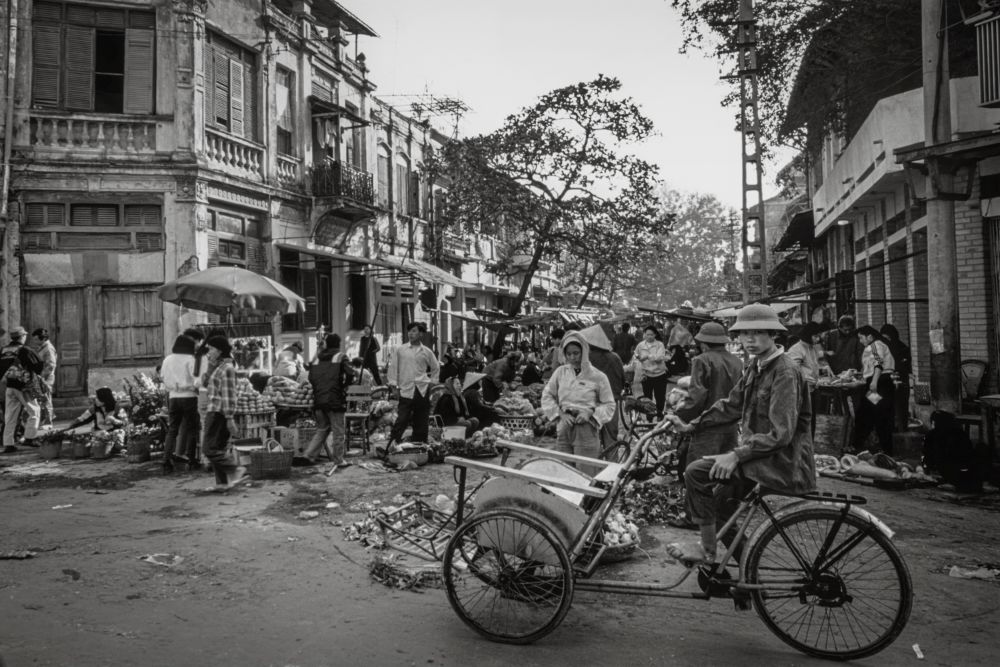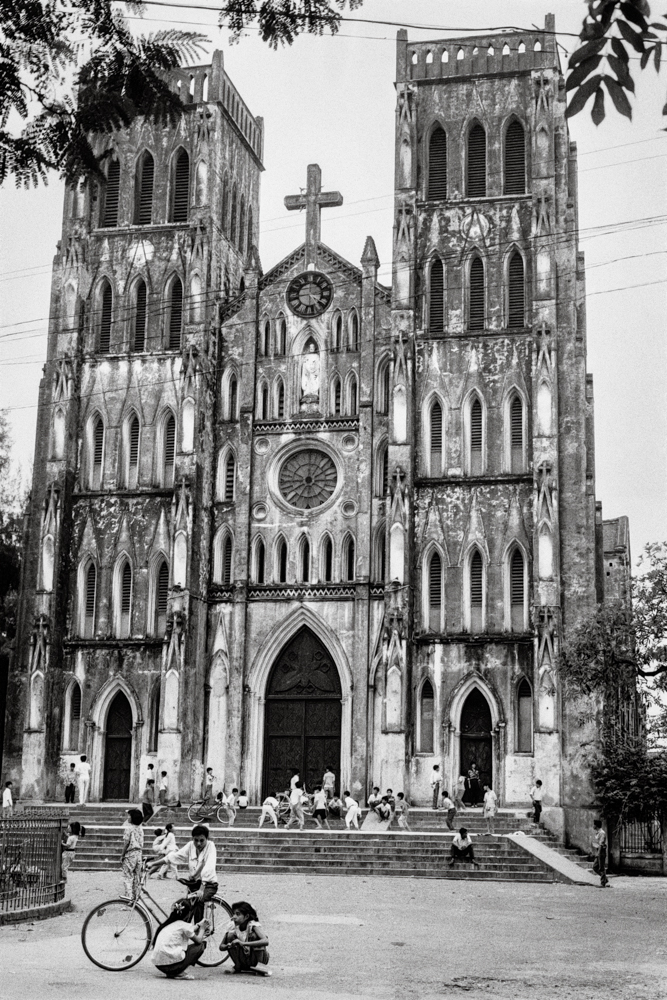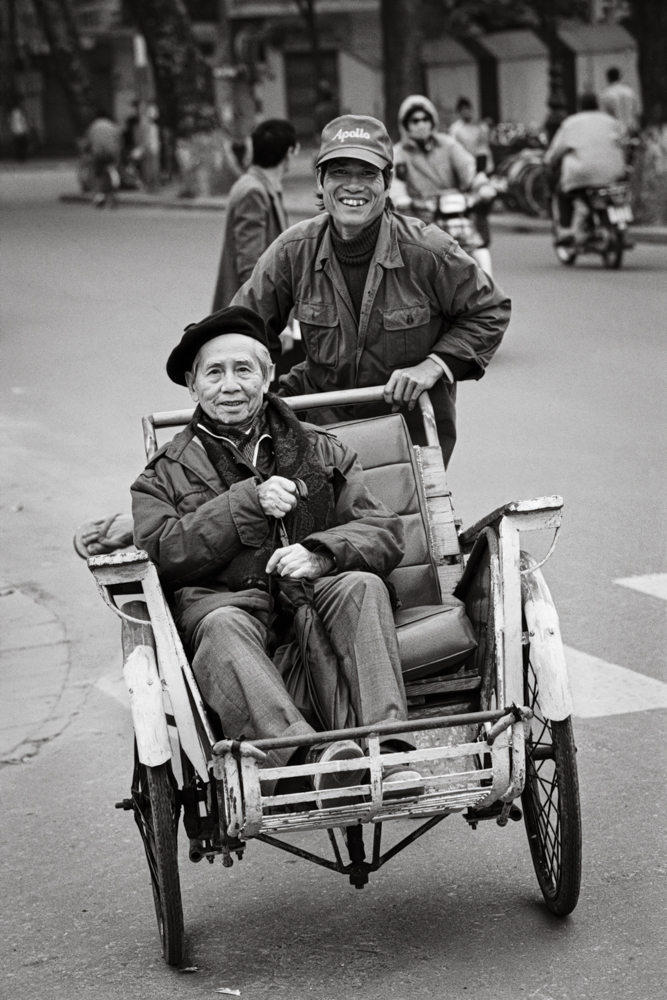British photographer Andy Soloman presents a captivating exhibition, “A Hanoi to Remember,” showcasing candid black-and-white photos of the city. On display until October 31 at the Antique Quarter Cultural Exchange Center, 49 Tran Hung Dao Street, Hoan Kiem District, the collection offers a unique glimpse into Hanoi’s past.
|
|
|
British photographer, Andy Soloman, captures the essence of Hanoi in his stunning photographs.
|
Soloman’s exhibition features 86 black-and-white photographs, taken between 1992 and 2012 in collaboration with Hanoi photographer Le Bich. These images transport viewers back in time, to a Hanoi filled with both struggles and simple joys.
“I distinctly remember my first arrival in Hanoi on October 21, 1992. I was immediately captivated by the city,” Soloman reminisced. What started as a single trip evolved into a lifelong love affair with Hanoi, which became his home from 1992 to 1999.
During his time in Hanoi, Soloman worked as a photojournalist, collaborating with various newspapers and news agencies before joining Reuters in 1997. His camera served as a passport, granting him access to the lives, families, and workplaces of the locals. “Everywhere I went, I was greeted with kindness and hospitality,” he recalled.
|
|
|
Hanoi, a city of rich history and culture, captured the heart of Andy Soloman. Pictured here is the intersection of Nguyen Du and Ba Trieu streets in the 1990s.
|
Soloman fondly recalls the people he met and photographed, sharing, “I vividly remember many of the individuals in these photographs. Tourists were a rarity, and foreigners stood out. I was often invited into homes for tea or to share a drink with a stranger. Despite my limited Vietnamese, we found ways to communicate, and the warmth of our interactions transcended words.”
Even then, Soloman sensed that Hanoi was on the brink of rapid change. His photographs capture a city in transition, with crumbling French villas and overcrowded yet beautiful houses in the Old Quarter making way for new developments.
“I’ve noticed that young people are especially drawn to my Hanoi photographs,” Soloman said. “They tell me that these images help them visualize how their parents’ generation lived.”
Today, Soloman focuses on travel and fine art photography, and he is currently working on a significant project in Vietnam, reconnecting with the people he photographed back in 1992-93.
|
|
|
Cyclo Drivers at a Tea Stall (1992) – This photograph captures the incredible friendliness and generosity of the local people.
|
|
|
|
Stonemason in Hang Mam, Old Quarter (1993) – Hang Mam was a hub of artisans, with stonemasons creating intricate carvings. The locals welcomed Soloman with smiles and invited him to capture their daily lives.
|
|
|
|
Bui Huy Truyen in Prayer (1992) – Bui Huy Truyen, 73, lived in Ngo Phat Loc. He led Soloman through a trap door to his beautifully decorated worship room.
|
|
|
|
Vietnamese Heroic Mothers (1998) – Soloman met a group of proud and smiling mothers from the Mekong Delta, dressed in their finest ao dai and adorned with medals, at Ba Dinh Square. Their strength and sacrifice left a lasting impression on him.
|
|
|
|
Nguyen Van Trang, Cat Toc Nam Barber (1994) – Soloman was a regular customer at Cat Toc Nam in Trang Thi, always satisfied with the excellent haircuts.
|
|
|
|
Hanoi’s First Taxi (1993) – Most people traveled by bicycle or motorbike, but the number of taxis was slowly growing.
|
|
|
|
Traditional Market in the Old Quarter (1993) – The markets were vibrant and bustling, with fresh produce and exotic fruits. Bicycle riders were always nearby, ready to offer a ride.
|
|
|
|
Shark’s Jaw Building Under Construction (1992) – This unique building blended modern architecture with traditional aesthetics.
|
|
|
|
St. Joseph’s Cathedral (1992) – The square in front of the cathedral was a lively gathering place for children after school, playing foot badminton, hopscotch, and rubber band jumping.
|
|
|
|
Old Man Traveling by Cyclo (1998) – The cyclo driver’s smile and wave stood out amid the bustling chaos of Hanoi. Soloman saw strength and endurance in his calm demeanor.
|
The Standard Chartered Hanoi Marathon Heritage Race, in 2024, is set to be a truly international event, with an expected 18,000 athletes from a diverse range of 55 countries coming together to celebrate the sport. This incredible gathering of global talent promises an electric atmosphere and a unique opportunity to unite runners from all corners of the world in the heart of Vietnam’s vibrant capital city.
As the spookiest time of the year draws near, Hanoi’s ancient Hang Ma Street awakens with a burst of color and creativity. The Old Quarter’s beloved festival approaches, and the street transforms into a haven for all things eerie and enchanting. A vibrant array of spooky toys and costumes line the streets, offering a delightful treat for both locals and visitors alike. It’s a time when the neighborhood truly comes alive, presenting a unique and captivating experience that is not to be missed!
The “Melodies of Hanoi” vinyl record captures the essence of Hanoi’s diverse soundscape. From the bustling streets to the tranquil lakeside, this record encapsulates the auditory tapestry that has long been intertwined with the very fabric of Hanoi’s culture.
The “Story of Hang Streets” immersive tour offers a unique glimpse into the refined world of Hanoi’s elegant past. Step back in time to discover the sophisticated lifestyle and courteous manners of the city’s residents during the 1940s and 1950s.
